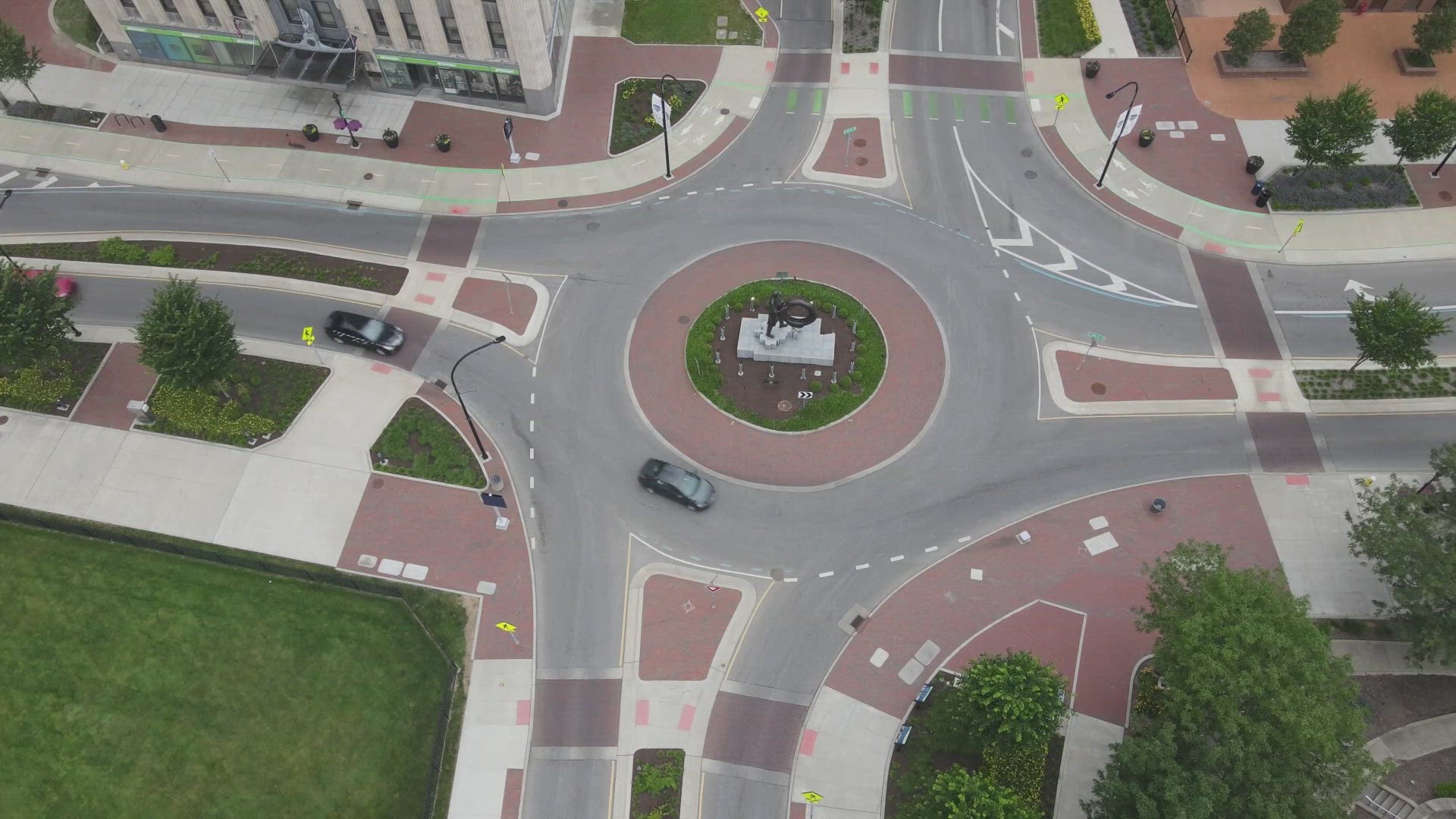AKRON, Ohio — Roundabouts -- some drivers love them, others hate them. A new study out from the Akron Metropolitan Area Transportation Study (AMATS) looks at the impacts of roundabouts across the greater Akron area, including compiling crash data.
AMATS covers Summit and Portage Counties as well as a small area of Northeastern Wayne County, tasked with doling out federal funding for transportation through the region, according to AMATS Transportation Planning Administrator Matt Stewart.
Stewart said this study on roundabouts, which looked at 17 of the 28 roundabouts in the greater Akron area, was meant to educate the public on roundabouts, and arm municipalities with the information and data they’d need to decide if roundabouts were the best fit for their communities. He said not all the roundabouts were studied due to their age and the amount of data available.
“In our safety analysis, our crash comparison, we found that in 15 out of 17 of the roundabouts, that our injury crashes were reduced,” Stewart said. “Now when it comes to overall crash reduction, it was slightly more than half of them did have total crashes reduce also. But really, roundabouts are more about reducing the more severe crashes. It's not necessarily about totally reducing the number of crashes. “
For example, the roundabout at South Main Street and Mill Street in Akron saw a 100% change in injury crashes and a 28% change in property damage-only crashes, with more of both of those types of crashes in the two years before the roundabout construction as compared to the years following its completion.
However, not all roundabouts locations saw crashes go down.
In Twinsburg at the Darrow Road and Glenwood Drive location, property damage-only crashes were in the double digits in the years immediately following the roundabout construction, as compared to single digits in the four years of data leading up to construction.
Still, with data from those 17 roundabouts showing 15 roundabouts saw a reduction in injury crashes, and nine saw a reduction in property damage-only crashes, Stewart said that the findings demonstrate the safety impacts roundabouts can have.
“To me, the most compelling aspect of why you would build a roundabout is for safety,” he said. “Roundabouts definitely reduce more serious crashes. The likelihood of them occurring is way down. You have fewer conflict points. That to me is the most compelling piece of why to build a roundabout.”
According to ODOT, roundabouts have eight potential conflict points versus 32 at a traditional intersection, their website referencing data from the Federal Highway Administration (FHWA) that says roundabouts achieve a 44% reduction in crashes. Studies from the FHWA also report that roundabouts reduce serious injury and deadly crashes by nearly 90% at two-way stop intersections, per the ODOT page on roundabouts.
More roundabouts will be coming to Northeast Ohio, according to Stewart. He said 12 roundabouts already have funding attached to them, and will likely be built in the next five years. He said of those 12, four are in Green, the community with the most roundabouts in the region.
MORE FROM 3NEWS...
- Cleveland Mayor Justin Bibb's driver told police he went through red light before crash due to 'emergency meeting'
- Gas prices drop 14 cents in Akron, 8 cents in Cleveland: See what GasBuddy is saying
- Driver hits Ohio Turnpike worker's vehicle in Erie County, 3 taken to hospital with non-life-threatening injuries
- Cleveland installing 100 asphalt speed tables to slow traffic, increase safety

